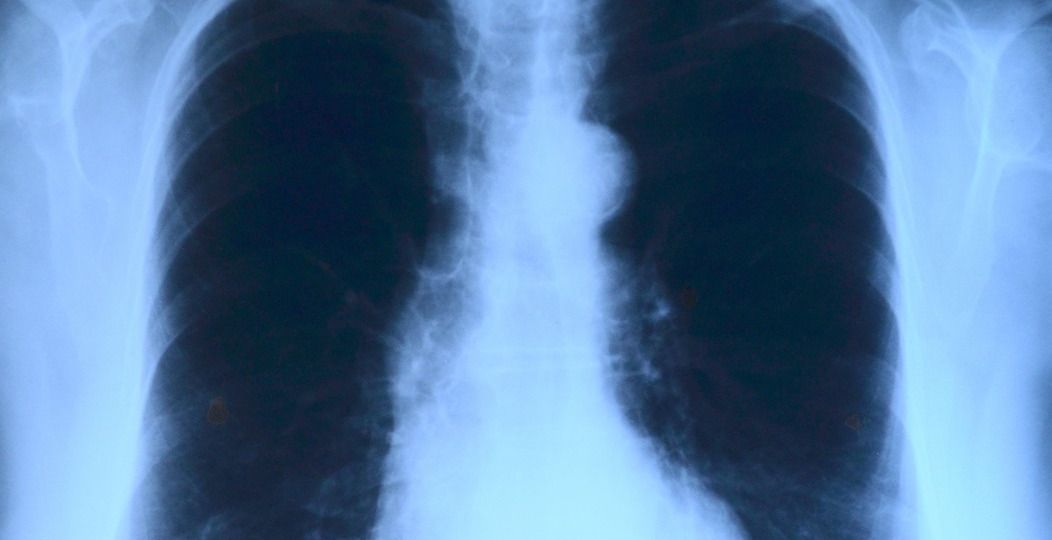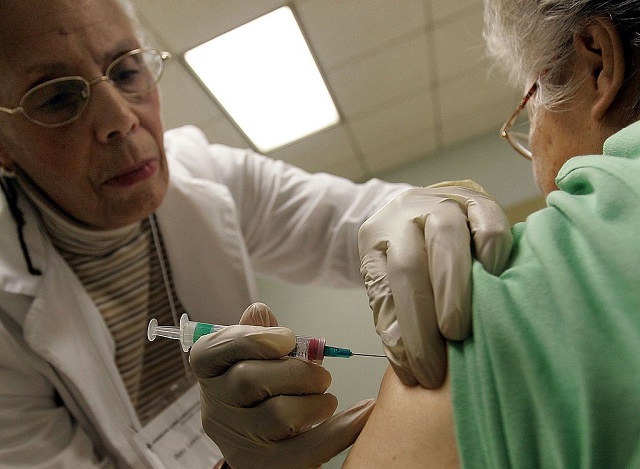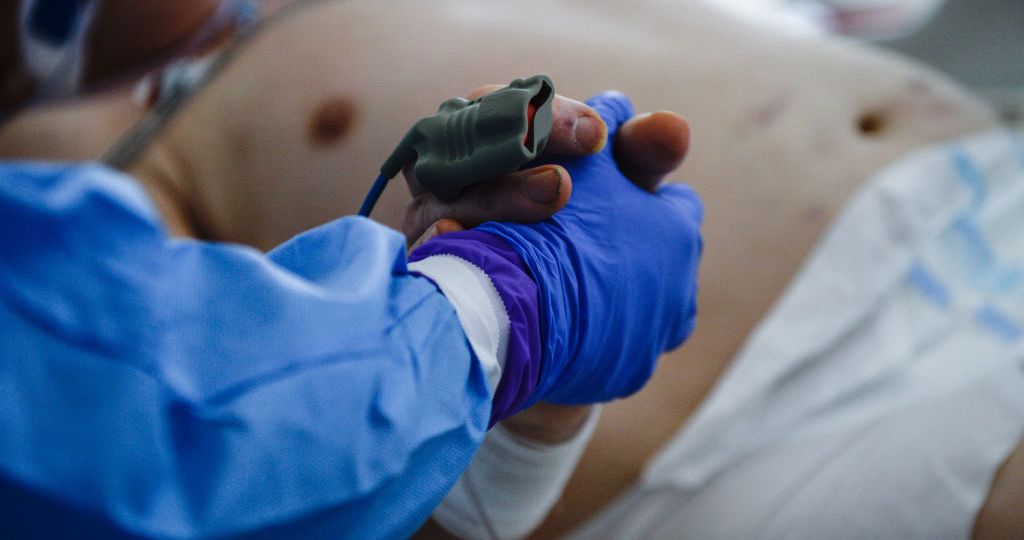Patient privacy is evolving rapidly in the post-Dobbs era, healthcare and life science lawyers said in a webinar hosted by the American Bar Association on Wednesday.
“For now, a request from law enforcement personnel for protected health information is not valid unless it is pursuant to a process or as otherwise required by law,” said Lynn Barrett, a healthcare lawyer at Wachler & Associates.
Barrett and other panelists discussed what the Health Insurance Portability and Accountability Act (HIPAA) actually protects as it pertains to reproductive health data following the Dobbs decision in June and how the Office for Civil Rights (OCR) is carrying out those rules. Physicians, reproductive clinics and femtech companies need to understand this intimately to mitigate liability as well as protect patients.
Barrett, who is based in Florida where abortion is restricted, explained that if a patient were to go to their doctor and say they’re pregnant but don’t plan to have the baby, the provider wouldn’t be required to disclose that information to a law enforcement officer.
“What OCR is saying is that the intention to do something cannot be reported under HIPAA,” Barrett said.
The OCR worked with the American Medical Association and other medical organizations to develop their legal position, which is, “It would be inconsistent with professional and ethical standards to disclose to law enforcement anything regarding an individual’s interest, intent or prior experience with reproductive health,” Barrett said.
An interesting situation will be the federal preemption issues that occur if a physician in Texas or Florida or another restrictive state decides to call law enforcement, Barrett said, referring to when federal law and state law conflict each other.
When it comes to medical information that’s not shared with a provider, but that’s related to a personal device, such as a cellphone or laptop, it’s even trickier. HIPAA does not protect information on personal devices.
“If law enforcement suspects that an individual has had an illegal abortion, they could go and request access to that individual’s phone, their applications that they‘re using, their femtech apps, anything like that,” said Bethany Corbin, a femtech lawyer at Nixon Gwilt Law.
As a result of increased privacy concerns, some femtech apps, such as the period tracking app Flo, have enabled an “anonymous” mode, Corbin said. Still, she cautioned against users having a “false sense of security” because it’s unclear what “anonymous” means.
“That’s something we’re going to have to continue to watch to see how many apps come out with those modes, and if there’s any further regulation of that,” Corbin said.
The value of health data on the black market, just a general healthcare record is about $250, Corbin said. And if you compare that to something like a credit card, a credit card goes for about $5.60 on the black market. So the value of health data is already hugely increased from almost any other type of data you can get on the black market, Corbin said.
Some femtech companies have added a paid version of their free apps which adds more privacy, so customers can have a sense of security, but this is also new territory and there needs to be more regulation, Corbin added.
Another panelist, Heather Deixler, a partner at Latham and Watkins in the healthcare and life sciences practice area, said there’s a high need for a federal privacy law to protect reproductive healthcare information because the “patchwork” laws that vary state by state are very difficult to navigate.
Deixler said there’s an analogy to draw between how patient data is protected when it involves reproductive health and when it involves substance use disorder. For example, she said, when a patient is recovering from substance use disorder, their patient information is protected from law enforcement, even though what they’re doing is engaging in illegal acts of abusing substances.
“Taking that approach could be a really good way to limit this [reproductive health] information from being disclosed to law enforcement,” Deixler said.
Deixler also described how the Federal Trade Commission has reacted to privacy concerns. In one case she described, the FTC sued data broker Kochava for selling patient data that tracked when people visited a reproductive health clinic.
In another case, the FTC sued period tracking app Flo for selling data to Facebook and Google without the patient’s consent.
“They were saying they weren’t sharing data with third parties but they were,” Deixler said of Flo. “Part of what the FTC did was enforce transparency and said you need to get consent with individuals before sharing information.”
The case was a “wake up call” for people using these apps, Deixler said.
In a segment on what tech companies should be doing amid privacy issues, Deixler suggested tech companies use end-to-end encryption to protect patient data, limit the collection and sale of information that can reveal pregnancy status, stop using artificial intelligence tools that reveal pregnancy status, and vet data sharing relationships.
Photo: JuSun, Getty Images
Medical device manufacturer iCAD is integrating Google Health’s mammography AI technology into its suite of breast imaging AI products, the Nashua, N.H.-based company announced Monday.
The two companies are entering into a development and commercialization agreement. In fact, the agreement marks Google’s first commercial partnership to deploy its breast imaging AI model into clinical practice.
“By combining the two high performing technologies, we get a superior algorithm that can detect more cancer, reduce false positives and speed reading time,” iCAD CEO Stacey Stevens said in an interview.
Under the partnership, iCAD will validate Google’s mammography AI model and eventually incorporate it into its products for clinical use. The company said it will integrate the tech into ProFound AI (its workflow solution for the 2D mammography) in 2023. It should be noted that a regulatory approval process is required once product development has become completed.
“While these dates are difficult to predict and subject to change, iCAD estimates the availability of an iCAD cloud offering by the end of 2023 and the new AI solution with Google AI in the first half of 2024, depending on the time it takes to achieve regulatory clearance,” said Nicole Linton, Google’s communications manager for health artificial intelligence.
Once it’s cleared, the AI-equipped medical devices will be sold to hospitals, health systems and outpatient clinics, Stevens said. Google and iCAD did not disclose the terms of the partnership or whether they will share profits.
The partnership is also about improving access to breast imaging AI technology, Stevens pointed out. To advance this goal, iCAD will use Google Cloud’s infrastructure to deploy its technology. Using the cloud will make these tools accessible to more women, “especially women who may live in areas of the world where there are infrastructure challenges and hardware constraints,” she said.
Google selected iCAD as its partner for the first licensing of its mammography AI model because of iCAD’s “legacy of leadership” in the breast imaging AI space, according to Linton. She also said that iCAD has a well-established install base, as ProFound AI is the most widely used breast imaging AI product on the market today.
The medical device company has an install base of about 7,500 licenses of its AI technology for mammography, Stevens pointed out.
But iCAD certainly isn’t the only company selling AI technology for breast imaging. There are plenty of companies developing AI not only for mammography, but across all other imaging modalities — including Holigic, Imagion Biosystems and ViewRay.
“We’re the only vendor that offers a full portfolio of AI,” Stevens declared. “That includes breast cancer detection, automated breast density assessment, as well as being the first and still the only company to offer a short term, breast cancer risk assessment AI tool that can assess a woman’s likelihood of developing breast cancer in the next year. It has around 80% accuracy.”
Photo: public domain image from the National Cancer Institute
Looking for a diet that can help reduce dangerous visceral fat? The Green Mediterranean diet may be the one apt for the task.The Mediterranean diet (MED) has consistently been at the top of the list of healthiest diets people can engage in. In fact, it was once again number one on U.S. News & World Report’s Best Diets this year, marking the fifth year in a row that it has taken the top spot.But when it comes to reducing visceral adipose tissue (VAT), will the traditional Mediterranean diet still come out on top? Or will the modified Green Mediterranean diet take the crown?VAT is a type of fat that’s very dangerous as it tends to wrap around one’s internal organs, the Ben-Gurion University of the Negev (BGU) noted in a news release. It has been “closely related to the development of multiple cardiovascular risk factors” and is “an independent marker of mortality,” a team of researchers noted in their study, published in BMC Medicine.
“Visceral adipose tissue (VAT) accumulation is one of the main key factors that differentiate between metabolic healthy and unhealthy obese individuals,” they wrote.Researchers looked at the impact of the Green Mediterranean diet on VAT. The Green Mediterranean diet is one that, just like the traditional one, is rich in foods like whole grains, fruits, legumes, fish and olive oil. The difference is that it is high in dietary polyphenols and green plant-based proteins, and low in red- and processed meats.In other words, it is a “greener version” of the traditional Mediterranean diet.The researchers conducted an 18-month study, the Dietary Intervention Randomized Controlled Trial PoLyphenols UnproceSsed (DIRECT-PLUS), that involved 294 participants, who followed either the simple healthy dietary guidelines, the Mediterranean diet or the Green Mediterranean diet.The participants’ adipose tissues were then examined through MRI scans. Incredibly, the team found that those who followed the Green Mediterranean diet had 14% reduced visceral fat. By comparison, those who opted for the traditional Mediterranean diet lost 7%, while those who followed the healthy diet lost an even lower 4.5% of visceral fat.This means the Green Mediterranean diet has led to a reduction in visceral fat that’s “more than twice” the VAT lost with the traditional Mediterranean diet.”A 14% reduction in visceral fat is a dramatic achievement for making simple changes to your diet and lifestyle,” said study author Hila Zelicha, of BGU. “Weight loss is an important goal only if it is accompanied by impressive results in reducing adipose tissue.”These results suggest the modified Green Mediterranean diet could be quite effective in reducing potentially dangerous visceral fat. And polyphenols might be behind the VAT loss. Polyphenols are phytochemicals present in many plant-based foods and they have been studied for their anti-inflammatory and antioxidant properties.”A green-MED diet enriched with polyphenols and decreased red meat consumption might serve as an improved version of the MED diet for targeted VAT reduction,” the researchers wrote. “Future studies are needed to explore the exact mechanisms of specific polyphenol-rich foods on visceral adiposity.”The team behind the DIRECT-PLUS trial was the first to introduce the Green Mediterranean diet, according to BGU. In a previous study, the diet was found to be even better for heart and metabolic health than the traditional Mediterranean diet.
A new advanced AI can predict a 10-year risk of death resulting from atherosclerotic cardiovascular disease (ASCVD) with a single chest X-ray.The trailblazing study was presented Tuesday at the annual meeting of the Radiological Society of North America.“Our deep learning model offers a potential solution for population-based opportunistic screening of cardiovascular disease risk using existing chest X-ray images,” lead author, Jakob Weiss, a radiologist affiliated with the Cardiovascular Imaging Research Center at Massachusetts General Hospital and the AI in Medicine program at the Brigham and Women’s Hospital in Boston, said, reported SciTechDaily. “This type of screening could be used to identify individuals who would benefit from statin medication but are currently untreated.”Generally, patients at high risk of heart disease are recommended a statin drug that lowers cholesterol levels in the blood as well as protects the artery walls from within. However, it is not always easy to detect the most vulnerable people, who are missing out on the medication that could save their lives.
The deep learning model developed by the researchers can help find people who have a risk of developing heart disease within the next 10 years and bring them under the ambit of primary prevention.“We’ve long recognized that X-rays capture information beyond traditional diagnostic findings, but we haven’t used this data because we haven’t had robust reliable methods,” Dr. Weiss said. “Advances in AI are making it possible now.”Currently, doctors calculate this 10-year risk by generating a statistical model that takes into account various factors, including age, sex, race, systolic blood pressure, hypertension treatment, smoking, Type 2 diabetes, and blood tests as well as an ASCVD risk score. Patients with a 10-year risk of 7.5% or higher are advised statin medication.“The variables necessary to calculate ASCVD risk are often not available, which makes approaches for population-based screening desirable,” Dr. Weiss said, according to the outlet. “As chest X-rays are commonly available, our approach may help identify individuals at high risk.”The research team trained a deep-learning model using a single chest X-ray (CXR) input. The model, known as CXR-CVD risk, was fed 150,000 chest X-rays taken from more than 40,000 participants in a prostate, lung, colorectal, and ovarian cancer screening trial under the aegis of the National Cancer Institute.The AI was then made to predict 10-year risk in individuals from the data of more than 11,000 patients with an average age of 60. These individuals who had routine outpatient chest X-rays at Mass General Brigham were potentially eligible for statin therapy, according to ScienceFocus.It was found that 10% of the patients from this group experienced a major cardiac event within the next 10 years. The CXR-CVD Risk model succeeded in predicting 65% of the cases.“The beauty of this approach is you only need an X-ray, which is acquired millions of times a day across the world,” Dr. Weiss said. “Based on a single existing chest X-ray image, our deep learning model predicts future major adverse cardiovascular events with similar performance and incremental value to the established clinical standard.”
veryone at some point has heard of or been told about the importance of drinking at least eight glasses of water per day. A new study put this axiom to the test and found surprising results.The study, published in the journal Science, found that the quantity of daily consumption of water depends on factors such as age, gender, activity levels, and climate.”The current study clearly indicates that one size does not fit all for drinking water guidelines, and the common suggestion that we should drink eight 8-ounce glasses of water per day (~2 liters) is not backed up by objective evidence,” the researchers wrote in their paper, reported ScienceAlert.While previous studies have busted this myth, they banked on the participants to correctly report the amount of water they had consumed. This assumption that the participants will remember and disclose the exact amount of water they had leaves room for human error.
The new study relied on scientific data that detailed the amount of water consumed by the body. To give a clear answer to how much water the human body needs, the study employed more than 5,600 volunteers of different ages from 26 countries around the world.Each participant was given 100 milliliters of water enriched with 5 percent “doubly labeled water.” Doubly labeled water, safe for consumption in small amounts, has isotopes of both hydrogen and oxygen. It helps in tracking the rate of movement of chemicals through the body.”If you measure the rate a person is eliminating those stable isotopes through their urine over the course of a week, the hydrogen isotope can tell you how much water they’re replacing, and the elimination of the oxygen isotope can tell us how many calories they are burning,” the study’s co-author, Dale Schoeller from Biotechnology Center and Department of Nutritional Sciences at the University of Wisconsin explained, according to ScienceAlert.Interestingly, the University of Wisconsin–Madison lab, where Schoeller works, was the place where doubly labeled water experiments in humans were pioneered in the 1980s.”Water intake requirements largely reflect water turnover, the water used by the body each day,” researchers wrote. Hence, water turnover was the parameter used to determine the amount of water assimilated by the body.Water turnover was seen the most between ages 20 and 30 in men and women aged 20-55. Furthermore, water turnover was found to decrease beyond the age of 40 in men and after the age of 65 in women, the study found.The highest turnover of water as a percentage of all the water in the body was observed in newborns.Also, all factors being constant, men consumed about half a liter more water every day than women, according to the study.Weight also played a role in water requirement, the results showed. Every 110 pounds increase in body weight, led to an increase of 0.7 liters a day of water turnover.Meanwhile, water turnover moved up by 0.3 liters as a result of a 50% increase in humidity.The location of an individual also matters. Participants living in developed countries following a sedentary lifestyle had lower water turnover compared to participants who were manual laborers or hunter-gatherers in developing countries, the study found.”The variation means pointing to one average doesn’t tell you much,” Schoeller stated, according to the outlet.”Improved guidelines are of increasing importance because of the explosive population growth and climate change the world currently faces, which will affect the availability of water for human consumption,” the researchers concluded.
You might want to take your vitamin D levels seriously. A new study has found low vitamin D levels are associated with premature death.Researchers from the University of South Australia (UniSA ) conducted the study — published in the journal Annals Of Internal Medicine — which found the severity of vitamin D deficiency was closely linked to increased mortality risk.“While severe vitamin D deficiency is rarer in Australia than elsewhere in the world, it can still affect those who have health vulnerabilities, the elderly, and those who do not acquire enough vitamin D from healthy sun exposure and dietary sources,” first author, Josh Sutherland, and a Ph.D. student at UniSA, said, reported SciTechDaily.Vitamin D is an essential nutrient needed by the body to ensure good, healthy bones and muscles.
“Our study provides strong evidence for the connection between low levels of vitamin D and mortality, and this is the first study of its kind to also include respiratory disease-related mortality as an outcome,” Sutherland continued. “We used a new genetic method to explore and affirm the non-linear relationships that we’ve seen in observational settings, and through this, we’ve been able to give strong evidence for the connection between low vitamin D status and premature death.” Speaking of challenges in conducting efficient studies on the relation between vitamin D and death risk, Sutherland said, “Vitamin D deficiency has been connected with mortality, but as clinical trials have often failed to recruit people with low vitamin D levels – or have been prohibited from including vitamin deficient participants – it’s been challenging to establish causal relationships.”For the study, the researchers scrutinized 307,601 records from the UK Biobank, which has participants recruited between March 2006 and July 2010.Vitamin D levels less than 25 nmol/L were considered low. The average vitamin D concentration was found to be 45.2 nmol/L.Senior investigator and Director of UniSA’s Australian Centre for Precision Health, Professor Elina Hyppönen, said more research will help inform public health strategies, which, in turn, will help formulate national guidelines.“The take-home message here is simple – the key is in the prevention. It is not good enough to think about vitamin D deficiency when already facing life-challenging situations when early action could make all the difference,” Hyppönen said. “It is very important to continue public health efforts to ensure the vulnerable and elderly maintain sufficient vitamin D levels throughout the year.”Another vitamin, B3, is in the news. A study has found the vitamin B3 supplement nicotinamide riboside (NR), promoted as an anti-aging product, may increase cancer risk and brain metastasis.”Some people take them [vitamins and supplements] because they automatically assume that vitamins and supplements only have positive health benefits, but very little is known about how they actually work,” co-author Elena Goun explained. “Because of this lack of knowledge, we were inspired to study the basic questions surrounding how vitamins and supplements work in the body.”
As the U.S. enters the holiday season, there is fear that the flu situation could get more alarming in the coming weeks. Based on the latest data from the Health and Human Services Department, flu hospitalizations have increased by nearly 30% in a week. More than 11,200 people were hospitalized due to the flu virus in the week ending Nov. 19, CNBC reported Monday. Compared to the previous week which recorded about 8,700 hospitalizations, there’s been a big jump in cases, leading experts to believe that the spread of the respiratory illness has remained high across the country. Flu season started earlier than usual this year, taking a toll on the emergency departments and hospitals amid the ongoing COVID-19 pandemic. In the past, flu activity typically picked up after Thanksgiving. But hospitalizations were already significantly high in early November this time around.
“The fact that we’re already at this high level going into the holiday season makes me nervous,” microbiologist and flu expert at the Penn Institute for Immunology Scott Hensley told the outlet. As early as October, flu activity in the country already set a record. About 11 people out of 100,000 have been hospitalized, the highest level recorded in a decade. According to the Centers for Disease Control and Prevention (CDC), around 35 states have been experiencing high or very high flu activity. Only 6 states were reporting low activity, and most were in the north. This flu season alone, more than 6.2 million people have fallen ill due to the influenza viruses, around 53,000 have been hospitalized, and 2,900 have reportedly died. As flu activity continues to climb higher, public health experts worry that more pediatric deaths could be reported in the coming weeks. Just recently, five more pediatric cases reportedly died, bringing the season’s total to 12, said the Center for Infectious Disease Research and Policy. The pediatric deaths reportedly occurred between early October and mid-November. All of the cases involved influenza A. H1Na and H3N2 were the two subtypes reported among the pediatric deaths. Though vaccine efficacy data has not been published yet, experts said they worked well with the newer strains. Hence, they encouraged everyone to get vaccinated to stay protected for the remainder of the flu season. “From what we can see, it looks like the vaccines are pretty darn good matches to what’s circulating. If there’s ever a time to get vaccinated, this is the year to do it,” Hensley said.
Are you looking for an activity to help ease mental health issues? You might want to give recreational fishing a try.Fishing has been touted as an activity that can help reduce stress, allow one to enjoy the outdoors and also boost mood and self-esteem. That is in addition to the physical benefits of the activity.In a new study, a team of researchers conducted a survey on 1,900 U.K. adults, Anglia Ruskin University (ARU) noted in a news release.They found “significantly fewer” people who participated in recreational fishing had anxiety disorder, attempted suicide or engaged in self-harm compared to those who don’t fish. This suggests that recreational fishing may be beneficial for people who are experiencing “serious” mental health issues.
“We have been told on numerous occasions by our service users that if it were not for the fishing sessions, they don’t think they’d be alive today,” David Lyons, the founder of angling organization Tackling Minds, said in the news release. “To now have scientific evidence to back up what we’ve been saying all along, is unbelievable, to say the least.”Tackling Minds successfully campaigned for angling to be recognized as a “social prescribing activity” on the National Health Service (NHS) last year, according to ARU. This means the use of a non-medical intervention for a health problem.”(E)ncouraging participation in fishing could be a good dual-method strategy for both promoting relaxation and good mental health as well as encouraging increased levels of physical activity within those with mental health issues such as anxiety disorder,” added Lee Smith, a professor at ARU.This could be beneficial for many as fishing is a relatively more accessible activity compared to other outdoor sports. In another ARU study, published earlier this year in the International Journal of Environmental Research and Public Health, researchers found that people with disabilities showed similar participation levels and “motivations” for fishing as others.And even though they faced some “barriers” such as cost, lack of transport and “having no one to go with them,” fishing is still quite an accessible sport.”Such findings suggests that fishing could be a more feasible and acceptable ‘green prescription’ for older men with disabilities in comparison to other outdoor physical activity,” the researchers wrote at the time. “The challenge of fishing and the relaxation benefits should be emphasized to encourage greater uptake of fishing.”
A new study has found that migraine has long-lasting effects on the brain that effectively change brain structure. What’s more, these changes are visible under an MRI scan.”In people with chronic migraine and episodic migraine without aura, there are significant changes in the perivascular spaces of a brain region called the centrum semiovale,” study co-author Wilson Xu, Keck School of Medicine of the University of Southern California in Los Angeles, said, reported NewsMedical. “These changes have never been reported before.”The results of the study are reported to be presented at the annual meeting of the Radiological Society of North America (RSNA).Migraine is a condition characterized by an intense recurring headache. Other symptoms may include nausea, weakness, and light sensitivity. Migraine is a very common problem that many people suffer from. According to the American Migraine Foundation, over 37 million people in the U.S. have migraine conditions, and up to 148 million people around the world suffer from chronic migraine, reported MedicalDialogue.
Perivascular spaces are fluid-filled cavities that surround blood vessels in the brain. They are most commonly found in the basal ganglia and white matter of the cerebrum, as well as along the optic tract. Centrum semiovale is the central part of white matter and white matter hyperintensity is the lesion that “lights up” on MRI.Several factors such as abnormal conditions at the blood-brain barrier and inflammation can affect perivascular spaces. Enlarged perivascular spaces, in particular, may indicate small vessel disease.”Perivascular spaces are part of a fluid clearance system in the brain,” Xu explained. “Studying how they contribute to migraine could help us better understand the complexities of how migraines occur.”The researchers used ultra-high-field 7T MRI to discern structural minute changes in the brain during different types of migraine.”To our knowledge, this is the first study using ultra-high-resolution MRI to study microvascular changes in the brain due to migraine, particularly in perivascular spaces,” Xu said. “Because 7T MRI is able to create images of the brain with much higher resolution and better quality than other MRI types, it can be used to demonstrate much smaller changes that happen in brain tissue after a migraine.”Participants in the study included 10 chronic migraine patients, 10 episodic migraines without aura patients, and five healthy controls with similar ages. All the participants were between 25 and 60 years old. Special attention was paid to avoiding patients with overt cognitive impairment, brain tumors, prior intracranial surgery, MRI contraindications, and claustrophobia in the study.Statistical analysis found that the number of enlarged perivascular spaces in the centrum semiovale was more pronounced in patients with migraine compared to healthy controls. Also, the quantity of enlarged perivascular space in the centrum semiovale was in proportion to white matter hyperintensity severity in migraine patients.”We studied chronic migraine and episodic migraine without aura and found that, for both types of migraine, perivascular spaces were bigger in the centrum semiovale,” Xu said. “Although we didn’t find any significant changes in the severity of white matter lesions in patients with and without migraine, these white matter lesions were significantly linked to the presence of enlarged perivascular spaces. This suggests that changes in perivascular spaces could lead to the future development of more white matter lesions.”Xu believes that their study “could help inspire future, larger-scale studies to continue investigating how changes in the brain’s microscopic vessels and blood supply contribute to different migraine types.” The end goal is that the study “could help us develop new, personalized ways to diagnose and treat migraine.”.
A Texas man’s life was put on hold after suffering from COVID-19 for more than a year. Dub Crochet reportedly had to stay at a hospital for 453 days after contracting a bad case of the coronavirus in August 2021, disabling him from enjoying the holidays and celebrating milestones with his family. The Bellaire native could not celebrate Thanksgiving with his loved ones last year. He also missed the birth of his new grandson. Worst, he had to celebrate his 70th birthday at the hospital due to his condition, Washington Post reported. “It was tough for me lying there during Thanksgiving [and] during Christmas because I’m a big holiday person. To miss that was tough,” he told the news outlet.
Most of Crochet’s doctors did not see a positive end to his case, thinking he would not be able to leave the hospital. They even told his wife, Rachel, that he would be in a vegetative state. “Every organ in his body failed at some point except his heart and his brain. The doctors looked at me and said, ‘He’s not going to survive,’” Rachel said. It’s a bit of a mystery how Crochet contracted the severe form of COVID-19 when he did not have preexisting conditions and was fully vaccinated when he tested positive for SARS-CoV-2 last year. When he was rushed to the emergency room after developing a fever and his oxygen levels dropped, his supposed short hospital stay landed him in the ICU, where he was placed on a ventilator a few days later. However, the unthinkable happened after 453 days as he recovered from the viral infection and several complications that came with it. On the day he got discharged, doctors and nurses at the hospital cheered for him as he was finally able to celebrate Thanksgiving with his family. He would also be able to return home for the holidays, including Christmas. But Crochet was not the one who battled the viral disease the longest. In April, U.K. doctors announced that they had documented the longest COVID infection on record — the patient had to be treated for more than 16 months, or 505 days to be exact. The patient, whose identity was not disclosed, first caught the virus in early 2020. They had symptoms and got diagnosed after undergoing a PCR test. Unlike Crochet, the patient was in and out of the hospital many times for both routine checkups and care, according to the BBC.










